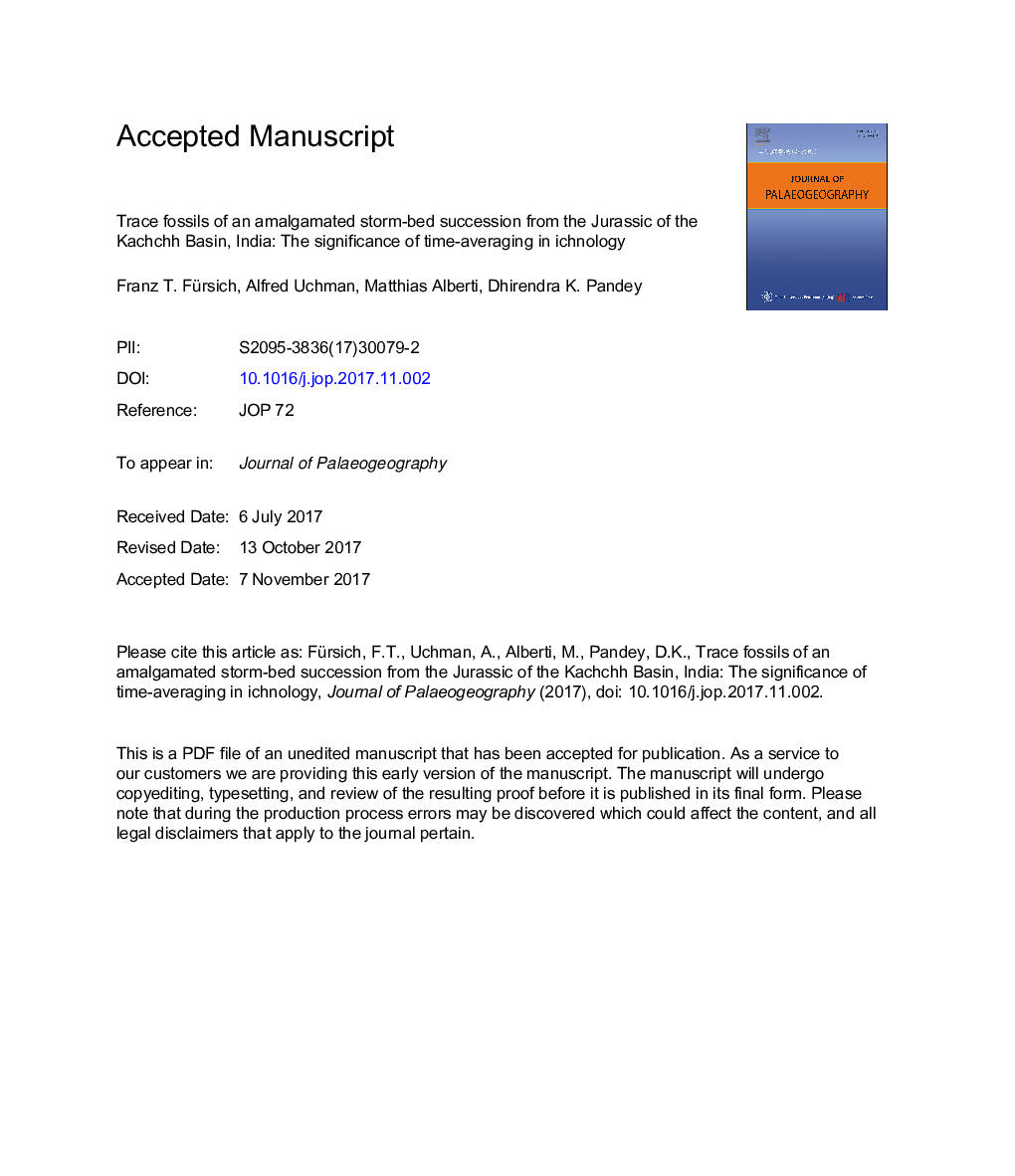| کد مقاله | کد نشریه | سال انتشار | مقاله انگلیسی | نسخه تمام متن |
|---|---|---|---|---|
| 8895321 | 1630314 | 2018 | 24 صفحه PDF | دانلود رایگان |
عنوان انگلیسی مقاله ISI
Trace fossils of an amalgamated storm-bed succession from the Jurassic of the Kachchh Basin, India: The significance of time-averaging in ichnology
ترجمه فارسی عنوان
ردیابی فسیل های یک دنباله ی طوفان آماری از ژوراسیک حوضه کچچ، هند: اهمیت متوسط زمان در
دانلود مقاله + سفارش ترجمه
دانلود مقاله ISI انگلیسی
رایگان برای ایرانیان
کلمات کلیدی
ردیابی فسیل ها، ژوراسیک میانی، حوضه کاچش، طبقه بندی، میانگین زمان، فناوری،
موضوعات مرتبط
علوم زیستی و بیوفناوری
علوم کشاورزی و بیولوژیک
دانش خاک شناسی
چکیده انگلیسی
The uppermost part of the Upper Bathonian Sponge Limestone member, Patcham Formation, of the Jhura Dome of Kachchh Mainland is a thickening- and shallowing-upward succession topped by medium- to thick-bedded hummocky cross-stratified grainstones deposited by storm waves. Occasionally, thin, commonly lenticular, intraclastic-bioclastic silty marl intercalations between the grainstones are highly bioturbated, in contrast to the grainstones, in which, for the most part, trace fossils occur scattered. Large exposures of bedding planes of the grainstones allow the detailed investigation of ichnological features, whereas the high density of traces in the soft marls precludes the identification of any ichnotaxa. Eighteen ichnotaxa have been recorded including Ophiomorpha, Thalassinoides, Taenidium, Gyrophyllites, Chondrites, Dactyloidites, Teichichnus, Bolonia, and Ancorichnus. Except for Ophiomorpha nodosa and Thalassinoides, which generally indicate moderate to high energy conditions and are the dwelling burrows of suspension-feeding to omnivorous crustaceans, the ichnotaxa represent a deposit-feeding behaviour of their producers and thus are characteristic of low-energy environments. The trace fossils form three ichnoassemblages characterized by (1) Ophiomorpha nodosa and Thalassinoides suevicus, (2) ?Thalassinoides isp. A, Taenidium, and Bolonia lata, and (3) Ancorichnus. The dominance of traces of deposit-feeders in rocks indicative of high-energy events is counterintuitive and points to their non-contemporaneity. The sediments were deposited during brief high-energy events, whereas the trace fossils were produced when, after waning of storms low-energy conditions prevailed. This time-averaging is particularly pronounced in trace fossils that extend vertically downwards and may reach strata deposited under distinctly different conditions. Thus, environmental interpretations based on trace fossils should refer to colonisation surfaces rather than to the sediment surrounding the trace fossils. In the latter case, interpretations may be erroneous, especially when erosion subsequently destroyed sedimentary evidence of their original environment.
ناشر
Database: Elsevier - ScienceDirect (ساینس دایرکت)
Journal: Journal of Palaeogeography - Volume 7, Issue 1, January 2018, Pages 14-31
Journal: Journal of Palaeogeography - Volume 7, Issue 1, January 2018, Pages 14-31
نویسندگان
Franz T. Fürsich, Alfred Uchman, Matthias Alberti, Dhirendra K. Pandey,
